My fiancé and I went on a 7-day road trip through 2 national parks. It cost us $1,000 each here's how we spent our budget.
Kelsey Neubauer

- My fiancé and I went on a road trip from Washington, DC, to Asheville, North Carolina.
- In one week, we explored Great Smoky Mountains National Park and Shenandoah National Park.
My fiancé and I are Manhattanites who love adventure and the outdoors. It's on our bucket list to visit all 63 US national parks in our lifetime.
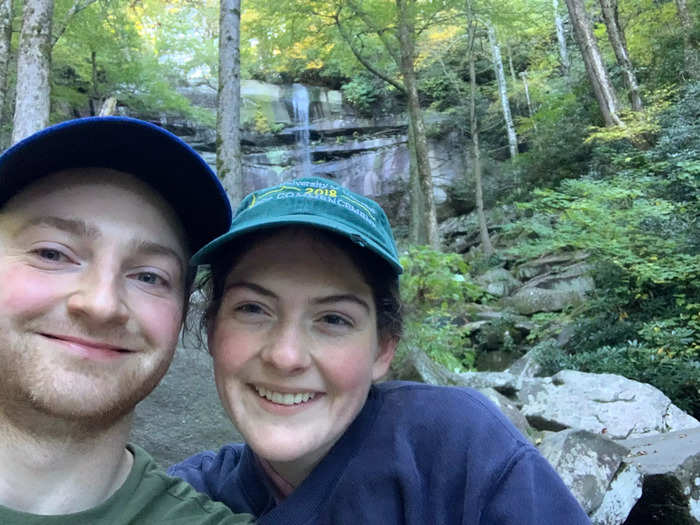
We started our challenge to visit all 63 US national parks in 2022 with snorkeling in Biscayne National Park, located off the coast of Miami. Since then, we've visited five parks in California, a subtropical lagoon in the Atlantic Ocean, and several national forests.
While planning a trip last fall, we learned about the Blue Ridge Parkway, which is known as America's favorite drive, according to the US National Parks Service.
Built as a Depression-era public works project, the road winds for some 469 miles through six Appalachian mountain chains. It starts in Virginia outside of Shenandoah National Park, goes through North Carolina, and ends in the Great Smoky Mountains National Park in Tennessee.
We decided this would be an ideal route to cover two national parks, and planned our one-week trip for the end of September.
For seven days, we decided to budget a little over $1,000 each for all expenses.
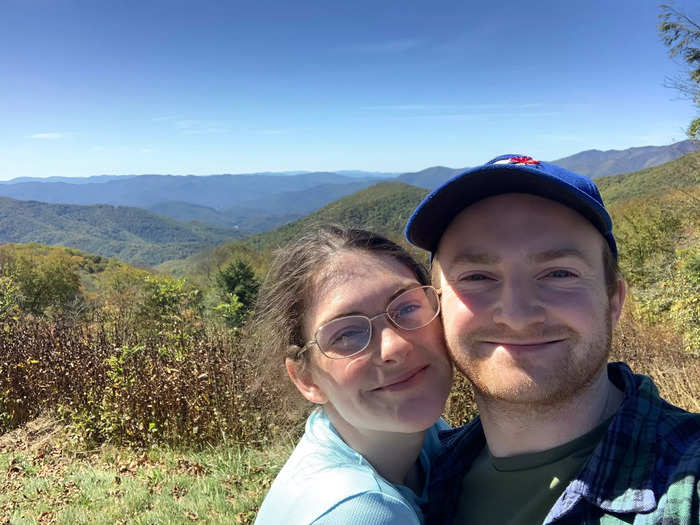
We budgeted about $600 for lodging, which included hotels, Airbnbs, and campsites. We allotted another $850 for transportation, including a rental car, an Amtrak train ride, and a flight home.
Finally, we set aside $400 for food, water, and gas, and another $200 per person for miscellaneous activities. Here's how we spent our budget.
On the first day, we spent $62 each on train tickets from New York to Washington, DC, to pick up our rental car.
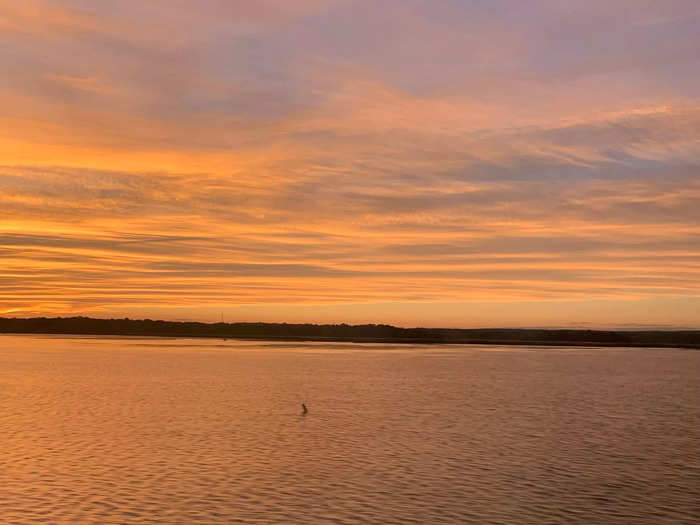
Instead of starting the road trip from New York, we found it would be cheaper to take an Amtrak train to Washington, DC, and book a car rental there. Car rentals were more expensive at rental locations in New York from what we saw online, and taking a train first would also save us from paying an extra day for a car.
I was glad we took Amtrak to start the trip. Since we left on a Thursday evening, we were both tired from work and appreciated the chance to take a nap on the ride.
We had dinner in DC for around $50 each at the historic tavern where John F. Kennedy proposed to Jackie Kennedy.
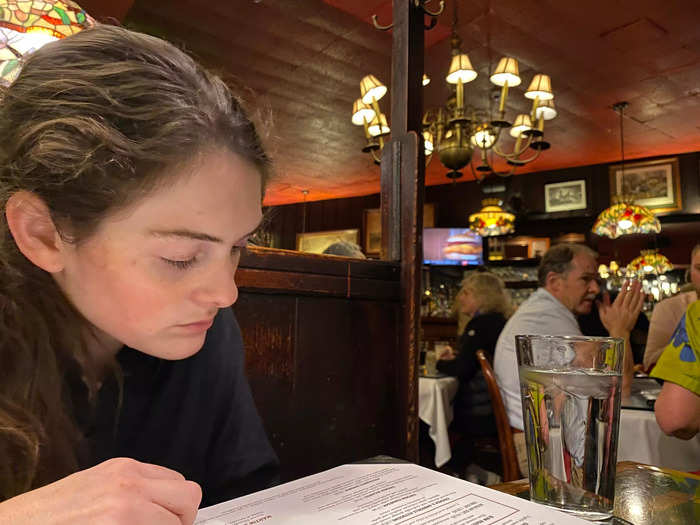
After arriving in DC, we grabbed dinner at Martin's Tavern, a historic restaurant founded by William Gloyd "Billy" Martin, a former MLB player in 1933, and where JFK proposed to Jackie in 1953.
I made a reservation weeks in advance to make sure we got a spot in case the popular spot got booked up; I'd been there before and had a great meal, and we thought it would be fun to eat at such a classic eatery to kick off our American road trip.
We sat near JFK's favorite booth, and spent $100 total for two meals, two drinks, and a mini apple pie for dessert.
Our car-rental pickup was the next morning, so we spent $170 total for an Airbnb in Georgetown.
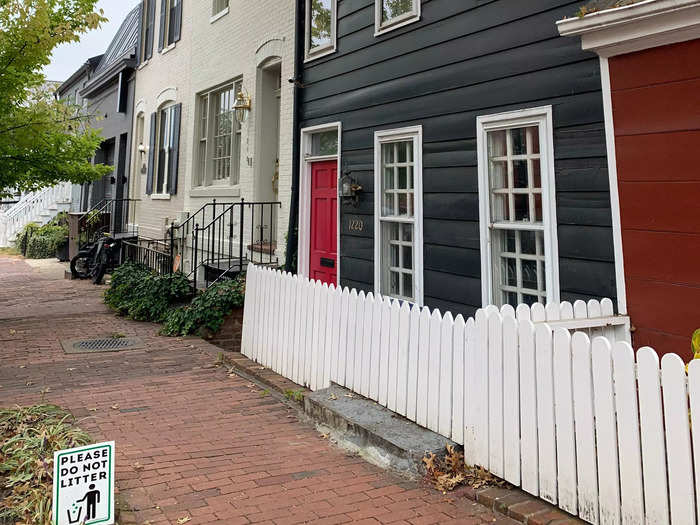
We wanted to be close to our car-pickup location for the next morning to avoid trekking across the city, and booked an Airbnb nearby in Georgetown.
The Airbnb was a private room in a small house with an attached bathroom. It cost $170 for the night, and I thought it was a great size for the two of us. After dinner, we plotted our road-trip plans and went to sleep.
Our Mitsubishi Outlander cost $343 to rent for seven days, and it became our home base for the trip.
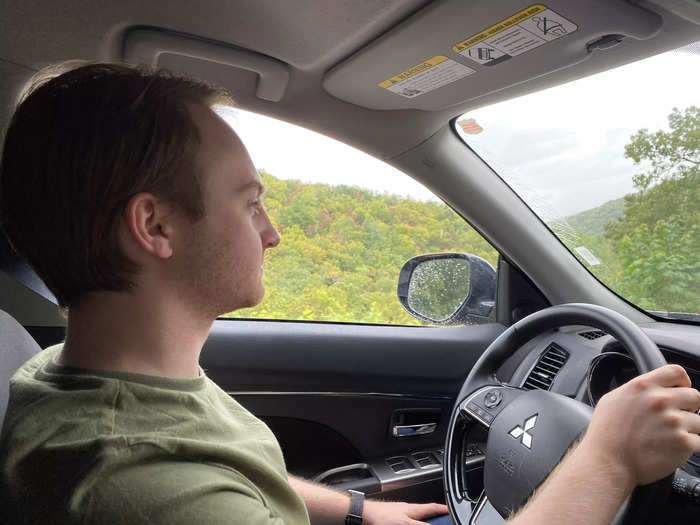
We'd booked our car rental online about a month before, and picked it up at 9 a.m. from a Georgetown garage. We chose Budget because I've found it has had the most affordable rentals in the past.
Our car, a Mitsubishi Outlander, cost a flat rate of $343 for seven days.
We stocked up on $120 of food for camping days in both national parks.
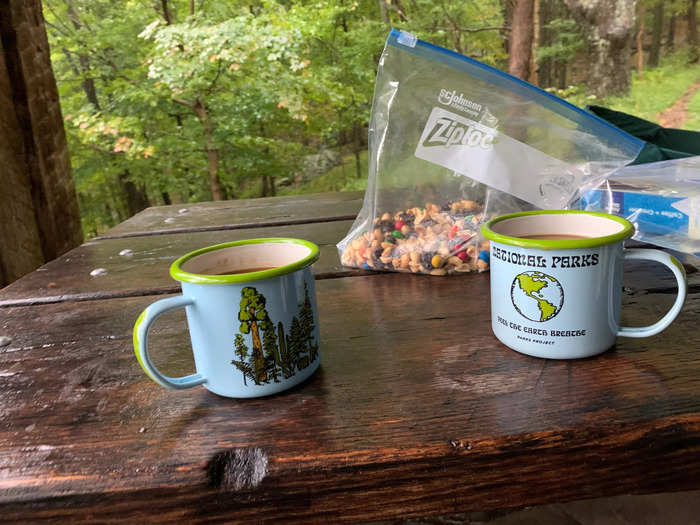
We went to an REI in Fairfax, Virginia, and bought a mix of dehydrated meals, instant coffee, high calorie snacks, water, and Gatorade that cost us a total of $120. We stored these items in the trunk of our car, to keep our supplies safe from bears.
En route to Shenandoah National Park, we stocked up on $120 of food to hold us over on our camping days.
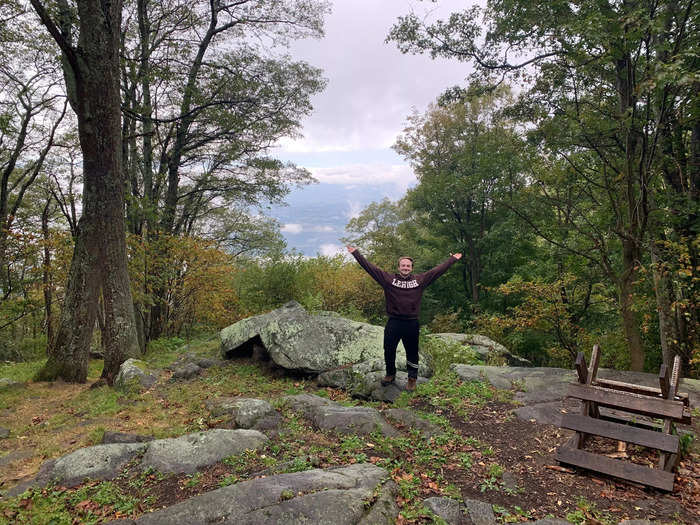
The cabin was located about a mile into the wilderness from a parking inlet located on Skyline Drive, the road we were driving along inside the park.
We parked the car and hiked a mile into the wilderness with all of our gear, including our queen-sized sleeping bag and backpacks of food.
Ken hauled in our camping mattress and two gallons of water, along with our camp stove, a tiny gas-fueled stove, and a pot to boil water, which we used to make our dehydrated meals and coffee in the morning.
The cabin had a dining area, kitchenette, wood-burning stove, and two queen-sized bunk beds.
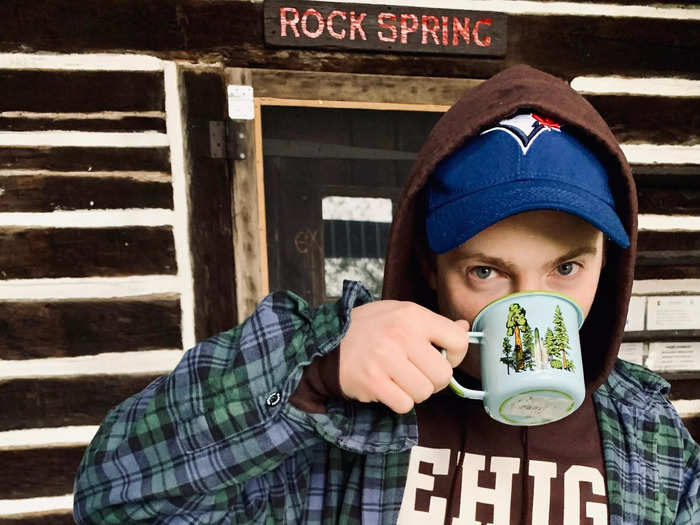
As advertised, the cabin had no running water, and only the outdoors for a restroom. It wasn't glamorous, and was more remote than we'd expected, but we loved the solitude of the property.
We found kindling in a tin can inside the cabin, and logs in a locked metal trunk outside. We'd received keys and instructions for the cabin by mail about a week before, which told us where to find these items to start a fire.
It was rainy and cold, and we were worried that we wouldn't have enough dry kindling for the second night, so we collected some twigs from around the cabin. Then, we made our dehydrated meals and stored more food in a bear-safe box that was provided outside.
The first morning in Shenandoah, we hiked out of the woods and drove to the visitor center where we spent $15 each on a small lunch.
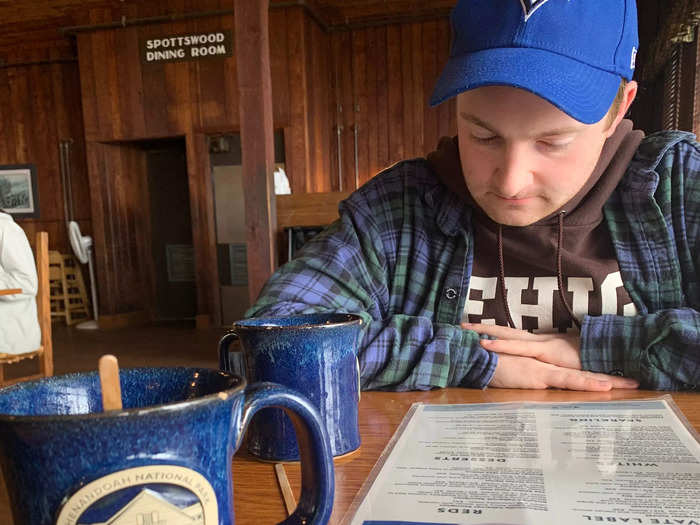
The next morning, we went to the Shenandoah National Park visitor center to pick up a map. A park ranger there told us that Hurricane Ian was about to hit the park in a matter of hours and that we should "batten down the hatches," and stay put until the storm rolled out.
We decided to stop quickly for lunch at Big Meadows Lodge, the only restaurant in the park. We ordered coffee, an omelet, and a sandwich, which cost about $30 total.
Most of our time in Shenandoah was spent in and around the cabin, as the weather was too bad for hiking.
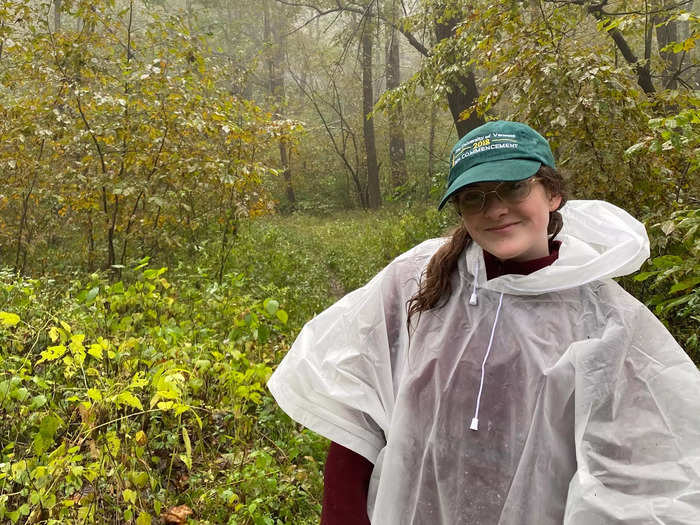
With Hurricane Ian raging on, our stay in Shenandoah was mostly spent inside the backcountry cabin. We kept warm by burning wood in the fireplace, and played card games, read, and went to bed early.
Instead of hiking, we explored the area around our cabin. It rained almost the entire time, but the wind wasn't bad, so we didn't mind it and we felt safe. Living in a big city, it felt refreshing to breathe in the forest air.
We both agreed we slept better in the cabin than we had at home in a long time. I think it helped that we didn't have distractions like a TV or cellphone service , and there was no light pollution.
On the fourth day of our trip, we packed up camp and paid $5 each for showers at communal campground restrooms.
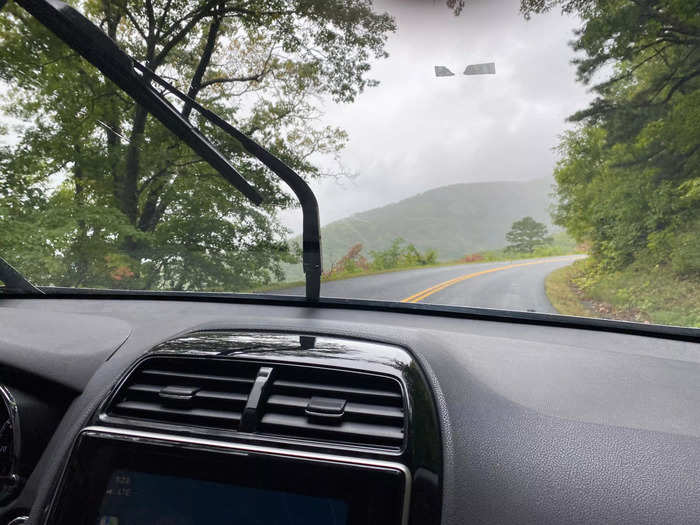
After our second night in the cabin, we packed up and hiked out to the car. We drove about an hour to the other side of Shenandoah National Park to shower at a campsite called Loft Mountain.
We paid $5 each for 10-minute showers, and $2 for one bar of soap. I wore flip flops as I was expecting the showers to be grimy, but was pleasantly surprised that the facilities were clean and seemed to be regularly maintained.
The shower was a relief and felt like the best one I'd ever taken, especially after three days in the woods during a hurricane. It also helped me feel warm for the first time in a few days.
We stopped for gas before driving south in Virginia. In total, we paid about $200 for gas on the trip.
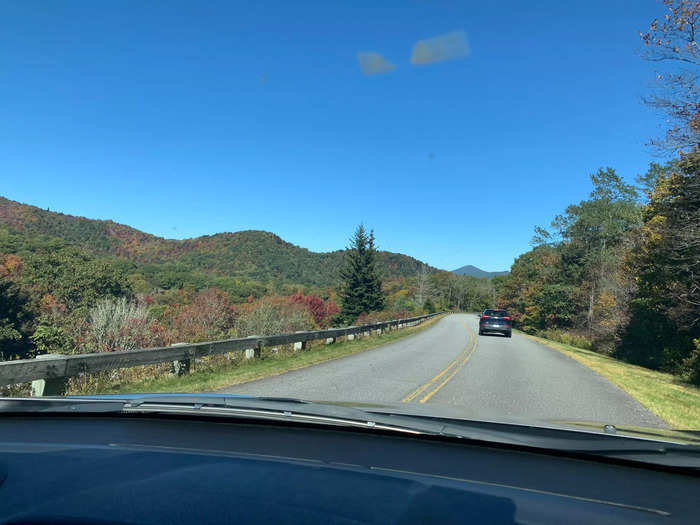
After getting back on the road and filling up at a gas station, we set out for an eight-hour drive towards Virginia. I thought the views of Appalachia we saw while driving were stunning.
However, we struggled to find a place to eat, and didn't see many restaurants or fast-food options along the drive. Finally, we found a diner near Roanoke, Virginia, and spent $30 on coffee and lunch.
Our second Airbnb, a cabin in Galax, Virginia, cost $140 for the night. We spent an extra $10 to do laundry and $30 on dinner.
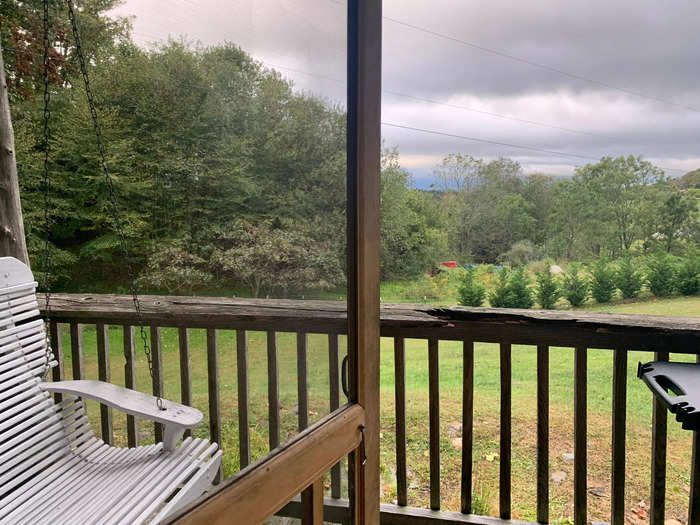
To break up the drive, we stopped for the night in Galax, Virginia, a small city in the southwestern part of the state. We picked this as a stop because it's home to the Blue Ridge Music Center, where we hoped to hear some bluegrass. Unfortunately, we didn't make it to Galax before the center closed.
Our Airbnb was a small, rustic cabin that cost $140 for the night. We washed our clothes at a local laundromat for $10, and spent another $30 on a meal in town. We also stopped by a post office to mail postcards to our families.
The next day we drove through more of Virginia, and then through all of North Carolina, spending $50 at a Whole Foods in Asheville, before heading to the Great Smoky Mountains.
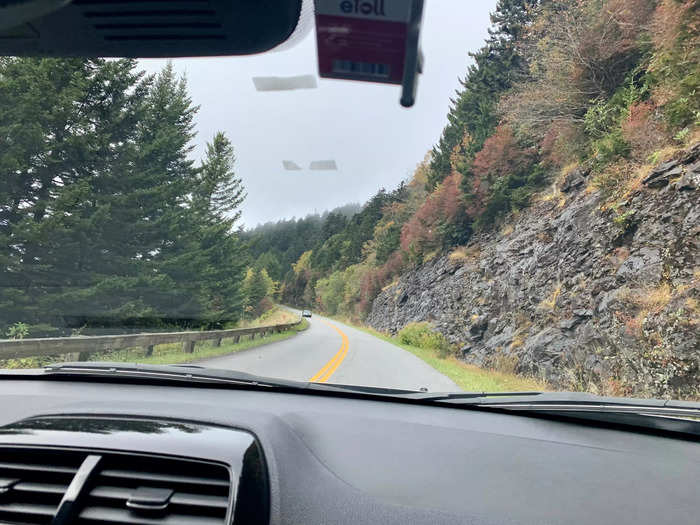
Seeing the farmland and mountain ridges, I thought I finally understood why my favorite musical artist, John Denver, loved the country roads along the Blue Ridge Mountains so much.
We stopped by a Whole Foods in Asheville to pick up more supplies like water, trail mix, and snacks. Despite picking up just a few items, they ended up costing us about $50.
We made it to the Great Smoky Mountains and spent $25 on an entry pass for the car.
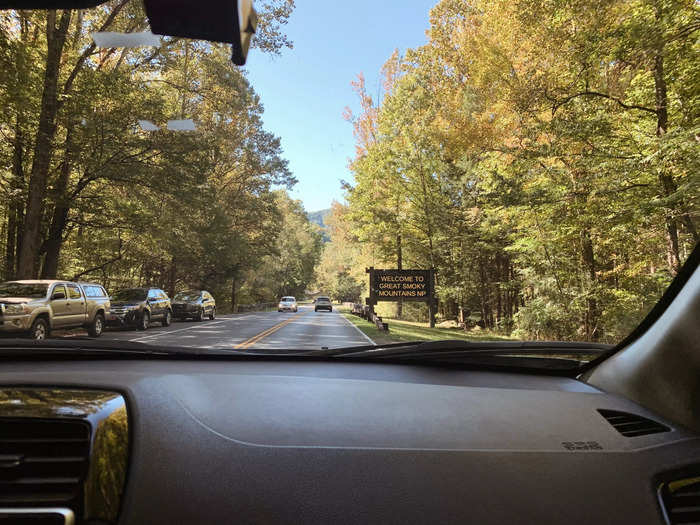
The Great Smoky Mountains were a breathtaking sight, especially with the fog rolling over the blue-green peaks that gave the range its name.
On our way in, the sun was shining through the trees. We saw a coyote running by, and could hear birds chirping. I couldn't wait to get settled and start exploring the park.
It cost $50 total for two nights at a campground in Great Smoky Mountains National Park.
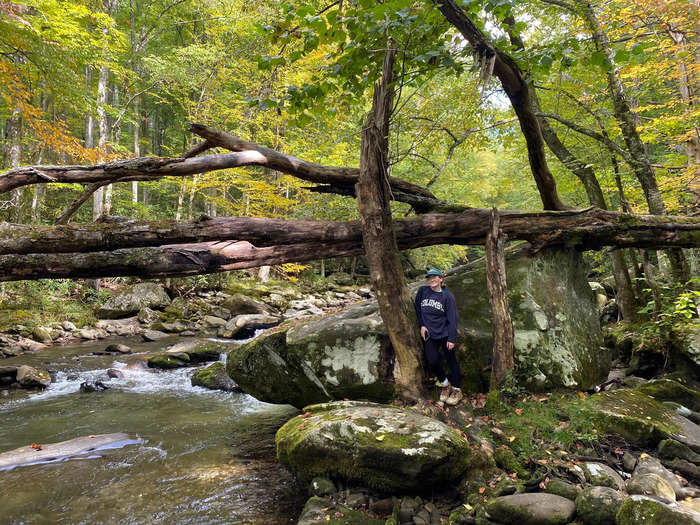
We chose Elkmont Campground because it was the most centrally located campsite that we could also reserve online and in advance. We camped in a small, two-person tent.
Our inflatable sleeping pad broke after the first night, and since it was very cold, we stopped at the store in Galtinburg, Tennessee, about 15 minutes from our campground and just outside the park, to grab extra blankets for the second night.
Over the next two days, we went on several hikes and saw waterfalls, a massive cave bluff, and wildlife like a small black bear climbing a tree, which left me in awe.
After leaving the Great Smoky Mountains, we drove east back to Asheville and stayed at a boutique hotel with free breakfast for $100.
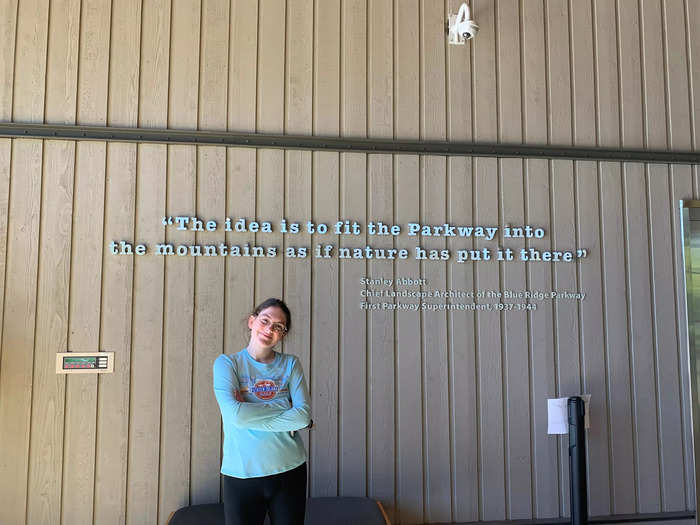
By the afternoon, we'd driven and hiked so much that we were exhausted. We packed up our campsite and got back on the Blue Ridge Parkway for the two-hour drive east to Asheville.
In Asheville, we checked into our room at Brookstone Lodge that cost $100 for the night. We each took a hot shower and a nap before getting something to eat.
For a night on the town, we spent around $120 total to enjoy North Carolina-style BBQ and some craft beers.
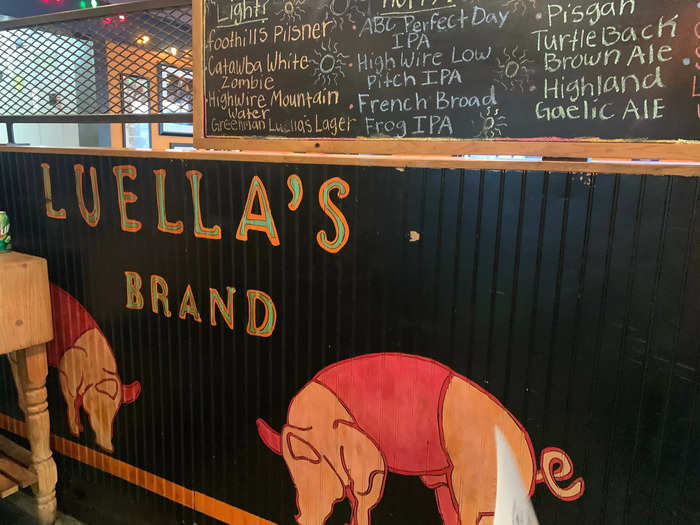
I'd been dying to try North Carolina-style barbecue since reading Michael Pollan's book "Cooked." Asheville residents told us Luella's BBQ was the best barbecue spot in the city, and we were not disappointed.
I had pulled barbeque chicken with green beans, fries, and a huge lemonade while Ken had ribs, fries, and a beer. It was amazing — I could taste the flavor of the pit on the meat and thought the side dishes were perfectly made. Dinner cost us about $60 total.
As craft-beer nerds, we knew we had to splurge on some local brews since Asheville has the most breweries per capita among cities in the US.
On the recommendation of a friend, we went to Wicked Weed Brewing Company, which was located in an industrial-style building with high ceilings. We tried a flight of some of the most sour beer I've ever tasted — too sour for me, and I'm someone who loves sour beer.
For the final leg of our journey home, we flew from Asheville to Newark for $159 per person.
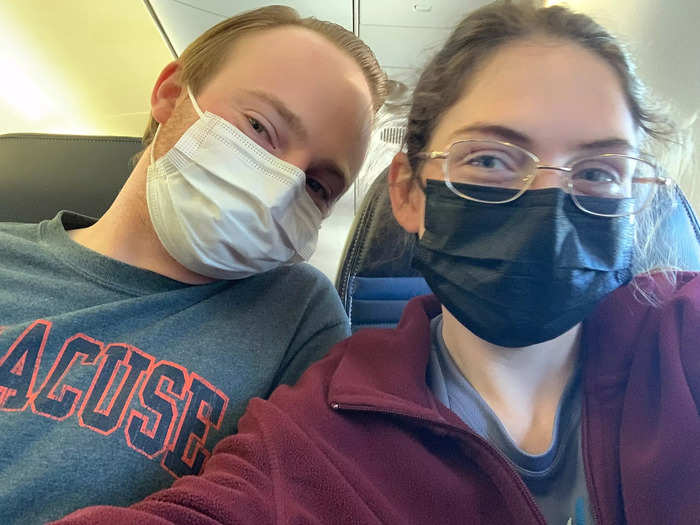
We dropped off our car rental in the morning at a Budget office in Asheville.
Then, we boarded a two-hour flight back to Newark, New Jersey, and took a nap on the plane. Since I'm a United Airlines card member, I was able to check our two suitcases of clothes and camp gear for free, so we only paid $159 each for a ticket.
We were both impressed we only spent $2,000 for an incredible, week-long vacation.
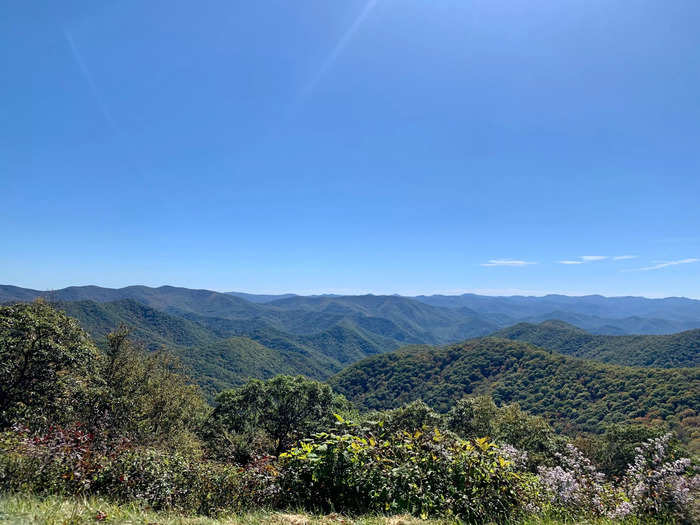
Ken and I saw a part of the US that we never knew before this trip, and we loved being surrounded by nature. It humbled us to see the vastness and beauty of the national parks, and seeing each other in a new light and new space felt like we were falling in love again.
When it comes to road trips and camping, we can't wait to do it all over again one day.
If we did this trip again, the only thing I'd change would be to skip the backcountry cabin, and opt for a room in a lodge with more amenities to sit out the bad weather.
Popular Right Now
Popular Keywords
Advertisement